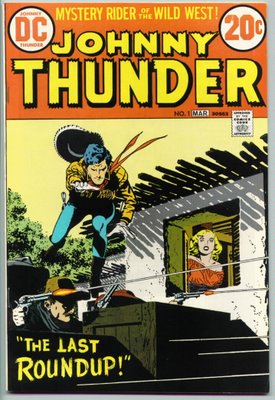
Another day, another obit: this time for one of the most influential artists the medium ever saw, a guy for whom I can scarcely open any comic without seeing a trick or technique he innovated. An artist so stylish he even affected the way other artists sign their name. The man of whom Howard Chaykin said "if Alex is a church, then I'm a disciple". I think nearly every artist whose work I love would name Toth as a major influence - such as his peer Joe Kubert, Frank Miller, Eduardo Risso, Darwyn Cooke, Jose Munoz, Jordi Bernet, Duncan Fegredo and any God's amount of others : every artist who's tried to pare their work down to the simplest, cleanest arrangement of black and white design possible to tell a story (though ironically not Mike Mignola, who told an incredulous Jon B. Cooke in 2002 that "I don't even know if I own a Toth comic now"but has clearly, independantly, came to many of the same conclusions in his own storytelling). That said, many artists who share few superficial similarities with his style also have praised his work, such as Brian Bolland, who has tried to use his influence at DC to prompt them to publish a themed collection of his work for the company. This would make sense, seeing as his work there was scattered throughout various long forgotten anthologies over four decades, though many may be unreprintable due to myriad licensing mysteries (his classic HOT WHEELS issues, for instance). My personal favourite being Anachronism, a haunting time-travel short in WEIRD WESTERN TALES #14. Typically bravura and ahead of his time, Toth drew the piece in widescreen, running the panels along the length, rather than width of his pages.
As well as being a overtly influential figure in the development of comic-book storytelling, he was an overt influence in the development of television animation, too: his work on Hanna-Barbera's action and superhero cartoons (SPACE GHOST, BIRDMAN, SEALAB etc, DYNOMUTT, SUPERFRIENDS, FANTASTIC FOUR) from the mid-sixties to the mid-seventies came to define the look of all action-orientated animation of the period, from companies like Filmation and Ruby-Spears. The nostalgic appeal of his designs continue to inspire animators: Cartoon Network's Adult Swim shows such as SPACE GHOST COAST TO COAST, HARVEY BIRDMAN ATTORNEY AT LAW, and SEALAB 2020 all remix and remodel his iconic work.
Alexander Toth was a contradictory character of strong opinions, whose career prospects since the mid-eighties were hampered by one-sided feuds of his own making and self-imposed exile (his career in television must have proven lucrative to avoid meaningful work for so long), interrupted by glimmers of work and correspondence coaxed out of him by editors and publishers who were, to a one, huge fans. No saint, but a man whose work longed for an era of clean-cut heroes whose morals were as black and white and clearly defined as the pages he drew. The man somehow always struck me as a rather Fitzgeraldian figure, an impression only strengthened by the manner of his death: he died working at his drawing table. The artistic equivalent of a gunfighter dying with his boots on, I'll think of him everytime I see a dogfight in a comic, or a drag-race, or a cowboy high in the saddle.